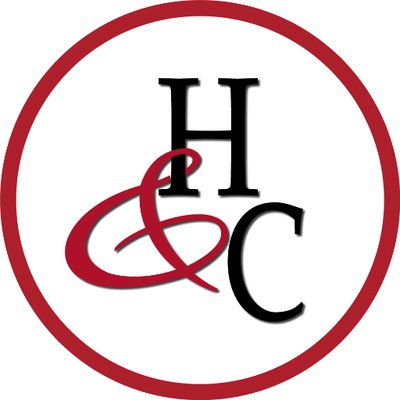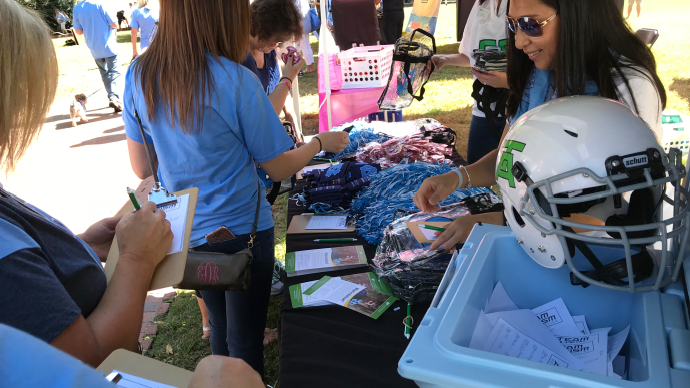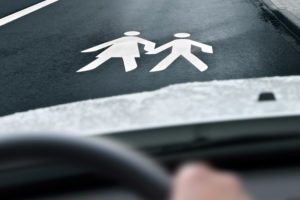
In a “car vs. pedestrian” accident, the person on foot in most cases sustains the brunt of the injuries. The National Highway Traffic Safety Administration (NHTSA) says pedestrians were one of the few groups of road users in the U.S. to experience an increase in traffic fatalities in 2016. For every fatal pedestrian accident, there were hundreds of collisions that caused injuries to people on foot.
Pedestrians include any person on foot, walking, running, jogging, hiking, pushing a stroller, sitting or lying down on a road or highway. Unfortunately, pedestrians are often children playing alongside or in a road.
Any driver knows they have a legal as well as moral duty to avoid hitting a pedestrian. But pedestrians have legal responsibilities, too. Sometimes, a person who has been hit by a car will be found to be at fault in the accident.
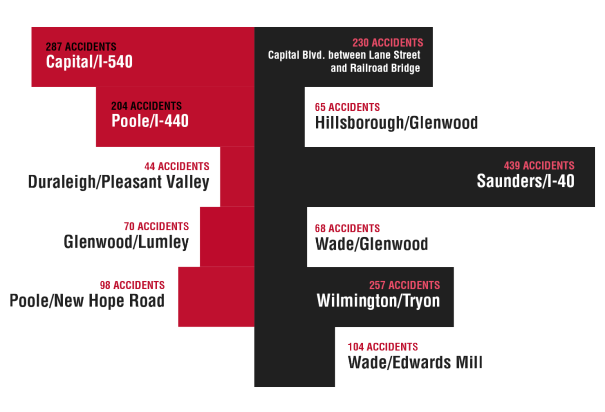
Pedestrians have both rights and responsibilities under North Carolina law. When a collision occurs involving a person on foot and a motor vehicle, it’s important to review the specifics of the accident to assess who is at fault.
Pedestrians have the right-of-way at marked crosswalks in both residential and business areas. But pedestrians are obligated to obey special pedestrian control signals, including “don’t walk” signals. If there are no pedestrian control signals, pedestrians are required to obey the regular traffic lights.
Pedestrians have a responsibility to walk on the sidewalk, when one is provided, and to walk on the left side of the road facing traffic when no sidewalk is present. When crossing a road at any point besides a marked crosswalk, pedestrians are legally required to yield the right of way to all vehicles on the road.
The Responsibilities of Motorists in North Carolina
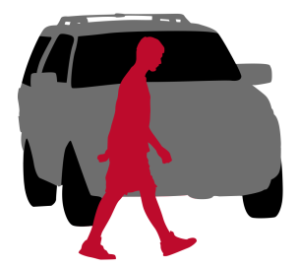 Although pedestrians have responsibilities under state law, drivers do as well. Many accidents are caused by drivers’ failure to see pedestrians and yield to them.
Although pedestrians have responsibilities under state law, drivers do as well. Many accidents are caused by drivers’ failure to see pedestrians and yield to them.
Motorists are required to yield the right-of-way to pedestrians who are crossing in a crosswalk at an intersection. When a vehicle reaches an intersection and the driver plans to turn right, if a pedestrian is crossing, he or she has the right of way. The driver must wait for the pedestrian to cross. Vehicle drivers must also yield the right-of-way to any pedestrian at a traffic signal with a steady red light, flashing red light or flashing yellow, as well as at stop signs, driveways, alleys, building entrances, and private roads.
Drivers cannot enter an intersection or a marked crosswalk unless there is sufficient space on the other side and the vehicle passing will not obstruct any pedestrian walking. Motorists should be especially careful when turning, as the pedestrian can be hidden in a driver’s blind spot.
Causes of Vehicle vs. Pedestrian Accidents
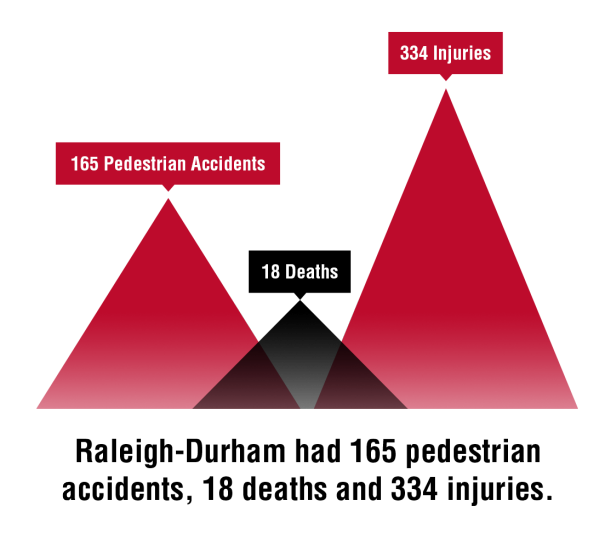 The most common cause of serious or fatal accidents involving pedestrians is distracted driving, speeding, and drunk driving. In some instances, pedestrians also contribute to accidents by disregarding traffic signals, jaywalking, or walking on the wrong side of the road while intoxicated or being distracted by cell phones and walking into oncoming traffic. Pedestrians must yield the right-of-way to motorists when crossing a road other than at a crosswalk at an intersection
The most common cause of serious or fatal accidents involving pedestrians is distracted driving, speeding, and drunk driving. In some instances, pedestrians also contribute to accidents by disregarding traffic signals, jaywalking, or walking on the wrong side of the road while intoxicated or being distracted by cell phones and walking into oncoming traffic. Pedestrians must yield the right-of-way to motorists when crossing a road other than at a crosswalk at an intersection
Pedestrians who dart and dash into the road or fail to yield put themselves in danger. Those who walk along the direction of moving traffic are more likely to be hit from behind. Pedestrians who are talking on a cell phone or texting are more likely to be distracted and fail to see an oncoming vehicle. Drivers turning in intersections, motor vehicles failing to yield as required, and backing vehicles contribute to a high numbers of pedestrian accidents in Raleigh.
Raleigh’s Most Dangerous Intersections for Pedestrians
In cities, where foot traffic is more common, about two of every five people killed in motor vehicle accidents are pedestrians, according to the N.C. Department of Motor Vehicles. Pedestrian deaths are increasing Nationwide each year, including North Carolina.
| Intersection | Number of Accidents 2009 – 2013 |
|---|---|
| Capital Blvd. between Lane Street and Railroad Bridge | 230 |
| Hillsborough/Glenwood | 65 |
| Saunders/I-40 | 439 |
| Wade/Glenwood | 68 |
| Wilmington/Tryon | 257 |
| Wade/Edwards Mill | 104 |
| Capital/I-540 | 287 |
| Poole/I-440 | 204 |
| Duraleigh/Pleasant Valley | 44 |
| Glenwood/Lumley | 70 |
| Poole/New Hope Road | 98 |
Source: Raleigh Public Record
According to the North Carolina Department of Transportation, North Carolina had 2,227 pedestrian accidents in 2013, causing 189 deaths and 1,991 people to be injured. The majority of these accidents took place in urban centers. Raleigh-Durham had 165 pedestrian accidents, 18 deaths and 334 injuries.
When Do We Blame the Victim in a Pedestrian Car Accident?
If who was at fault in a pedestrian accident becomes an issue, it is because someone has been significantly injured. That invariably is the person who was not protected by a metal passenger compartment of a vehicle. A pedestrian hit by a car or truck can suffer life-changing injuries.
Yet, it is not always the driver’s fault.
Under North Carolina law, pedestrians have the right of way at intersections that are not controlled by a traffic signal. Drivers are required to yield to pedestrians crossing in marked crosswalks or unmarked crosswalks near intersections that do not have traffic lights. Drivers entering or exiting alleys, driveways or building entrances also must yield to pedestrians.
However, when crossing the road anywhere other than at an intersection or marked crosswalk, or when walking along or on a highway, a pedestrian must yield the right of way to all vehicles on the roadway, according to N.C. law.
Pedestrians are required to look before starting across a highway, and to keep a lookout for approaching vehicles. On roadways where there is no sidewalk, pedestrians should always walk facing traffic.
Pedestrians are to obey traffic signals or crossing signals where they are available.
The North Carolina statute pertaining to crossing a road or walking along the road also states that:
“Notwithstanding the provisions of this section, every driver of a vehicle shall exercise due care to avoid colliding with any pedestrian upon any roadway, and shall give warning by sounding the horn when necessary, and shall exercise proper precaution upon observing any child or any confused or incapacitated person upon a roadway.”
North Carolina law indicates that we all have a duty to look out for each other on public roads and highways. Our “duty of care” to one another is a legal cornerstone of society. Problems occur when someone fails to exercise care and their carelessness or disregard for safety causes an injury.
A pedestrian has a duty to act in a reasonably cautious manner and to obey traffic rules. A pedestrian may have breached that duty of care to motorists and be at fault in a collision if he or she:
- Crossed a road against a traffic signal at an intersection
- Crossed an intersection diagonally
- Crossed a road between intersections
- Failed to look properly before crossing a road
- Was standing, lying or playing in the road
- Was walking in the roadway in the same direction as traffic instead of facing oncoming traffic
- Stepped off the curb unexpectedly or came out from behind parked cars into the path of a motorist who did not have time to stop or to avoid a collision.
Any reasonable motorist will try to avoid hitting a pedestrian. If you’ve been hit by a car and badly injured, a lawyer for the motorist will analyze your actions before the accident to determine whether you contributed to the accident. You will need your own attorney to defend your rights and, in many cases, find out the truth behind the accident.
Finding Fault is Key Under N.C. Contributory Negligence Laws
Who is at fault in a pedestrian accident becomes a legal issue when someone has been injured and the injured person seeks compensation for their losses. A personal injury claim may demand compensation from the at-fault party for medical expenses, lost work time, pain and suffering, and more. A wrongful death claim is similar.
North Carolina civil courts apply the doctrine of contributory negligence to determine damage awards in personal injury accidents. The law in North Carolina says an injured person who is at fault to any degree for their injuries cannot recover compensation.
If a pedestrian’s actions caused or contributed to a crash that left the pedestrian injured, the legal claim will be in jeopardy. This is not necessarily the case with a young child, however. A very young or immature child is not normally held to legal responsibilities.
Personal injury attorneys like ours at Hardison & Cochran work with investigators to determine what happened to our injured clients and how they may recover compensation they are due.
In a pedestrian accident claim, in addition to interviewing the parties involved, we might recover evidence from:
- Police reports
- Witnesses
- Security or stoplight cameras
- Vehicle damage, which might indicate the car’s speed at the time of the crash, for example
- Driver cell phone records, which might indicate distracted driving
- Toxicology reports, such as blood-alcohol and drug test results
- And more.
To pursue a personal injury claim on behalf of an injured pedestrian, our attorneys would need to determine that the injured individual had obeyed traffic laws and acted in a reasonably safe and responsible manner and was not at fault. In negotiations with insurers and in court, our attorneys would argue on behalf of our client and work to mitigate any blame suggested by opposing attorneys.
Contact an Experienced Pedestrian Accident Attorney
If you were the driver or the person on foot in a pedestrian accident in Raleigh, you should contact a car accident attorney. We will review the details of the accident and help you determine whether you have a valid claim.
Most car accident claims, including pedestrian accidents, are settled out of court. If you or a loved one of yours has been hit by a car and injured in the Raleigh area of North Carolina,contact Hardison & Cochran for experienced legal assistance. We can meet with you for no charge and will not charge any fees unless we recover money for you.

